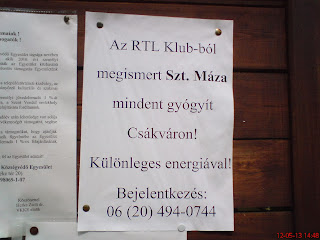A monda szerint Kossuth
Lajos nem tudott inni a Tiszából: amikor megmerítette a kalapját,
hogy igyon, a kalapban mindig fickándozott két - három hal.
Megelehet, ez regényes
túlzás: de tény, hogy régebben mi, magyarok sokkal több halat
fogyasztottunk. Manapság ritkán kerül asztalra a ponty - jóformán
csak karácsonykor, még ritkábban a harcsa, a csuka vagy akár a
keszeg.
Pedig egyetlen pontyból
is kiváló ebéd készíthető az egész család számára, és
egész halat venni gazdaságosabb is, ha vállaljuk a tisztítást.
És van alternatíva a szokásos halászlé - rántotthal páros
mellett! Két receptet ajánlok: halleves fehérborral és natúr
halszelet, vajban.
Halleves fehérborral
Hozzávalók
Egy halfej, belsőség
(ha van a halban ikra vagy tej), farok és apróbb szeletek; egy
evőkanál olivaolaj, 3 dkg vag, egy fej vöröshagyma, két
sárgarépa, petrezselyem gyökér vagy pasztinák, egy kiskanál
liszt, só, bors, tárkony, babérlevél, koriander, 2-3 dl fehérbor,
1 dl tejszín vagy tejföl, egy citrom.
Elkészítés
Az oliva olajban
megolvasztjuk a vajat, hozzáadjuk az apróra vágott vöröshagymát
(fokhagymát és pórét is adhatunk mellé), hozzáadjuk a vékony
karikára vágott zöldséget, együtt megpiríjuk. A hallevesben
nagyon jól érvényesül a pasztinák! Amikor a hagyma megfonnyadt
és a zöldség megpirult, hozzáadjuk a koriandert és a borsot,
majd a kis kanál lisztet. Felöntjük vízzel, és beletesszük a
megtisztított halfejet és a hal farokrészét (az uszony nélkül).
35-40 percig főzzük, amíg a halfejből a csontok könnyedén
kivehetők nem lesznek. Akkor a fejet és farokrészt kivesszük egy
tálra, és a használható halhúst lefejtjük, majd vissszatesszük
a lébe. Ismét felforraljuk. Forráskor hozzáadjuk a bort és a
belsőséget, a halszeleteket. Még 3-4 percig főzzük, amíg a
halszeletek is megpuhulnak, de nem esnek szét! Hozzáadjuk a tejfölt
vagy tejszínt, még egyszer felforraljuk, majd belecsavarjuk a
citrom felét. Egy-egy citromkarikával tálaljuk. Nagyon tartalmas,
mégis könnyű étel, téli estéken kiváló, karácsony este is!
Halszeletek vajban
A ponty szebb szeleteit
félrerakom, vajban kisütöm. Nagyon egyszerűen, könnyen megvan.
Serpenyőben megolvasztom a vajat, kisebb lángon az előre sózott,
borsozott halszeletek mindkét oldalát megsütöm. A vékonyabb
halszelet 4-5 perc alatt átsül. Ha sültebben szeretjük, fedővel
le lehet az első 2 percben takarni. Önmagában, citrommal
nyakonöntve is nagyon finom, de kapormártással, gombamártással
is kiváló.




















